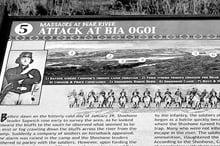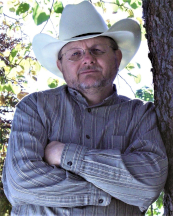No products in the cart.
Buying Back History

A Shoshone Cultural Revival
Story and Photos by Rod Miller
What first drew me to a protected valley between high bluffs just northwest of Preston where the Bear River winds? I don’t recall but I have visited numerous times, each time haunted by the inhumanity it represents.
Day after day when Highway 91 traffic speeds by this valley, most of the people in the cars have no idea they’re driving through sacred ground—a place of unrest for hundreds of men, women, and children who died here at the hands of the United States Army on January 29, 1863.
On the killing field, the soldiers left behind a destroyed winter camp where members of the Shoshone Tribe had sheltered from wind and storms for longer than anyone can remember.
The Massacre at Bear River has become something of an obsession with me. I’ve written a nonfiction book about it, magazine articles, a novel, and short stories—even poems, one of which became song lyrics.
One of those stories, “Play Dead or Die,” written for an anthology of short fiction to benefit the Standing Stone American Indian Cultural Center in Tennessee, is based on the experiences of a young boy, Da-boo-zee, a son of Shoshone chief Sagwitch. At age twelve, Da-boo-zee lived through the massacre by following his grandmother’s advice to lie still on the frozen ground and play dead as soldiers rampaged through the village.
Known in later life as Yeager, the boy’s descendants include a granddaughter, the late Mae Timbimboo Parry, tribal historian and collector of oral histories from massacre survivors, and her grandson Darren Parry, who served on the Northwestern Band of the Shoshone Nation Tribal Council for twenty years and was tribal chairman. Grandmother Parry told and retold the stories of Shoshone history to Darren as he grew up, and together they made visits to the massacre site.
This content is available for purchase. Please select from available options.
Purchase Only
Purchase Only

